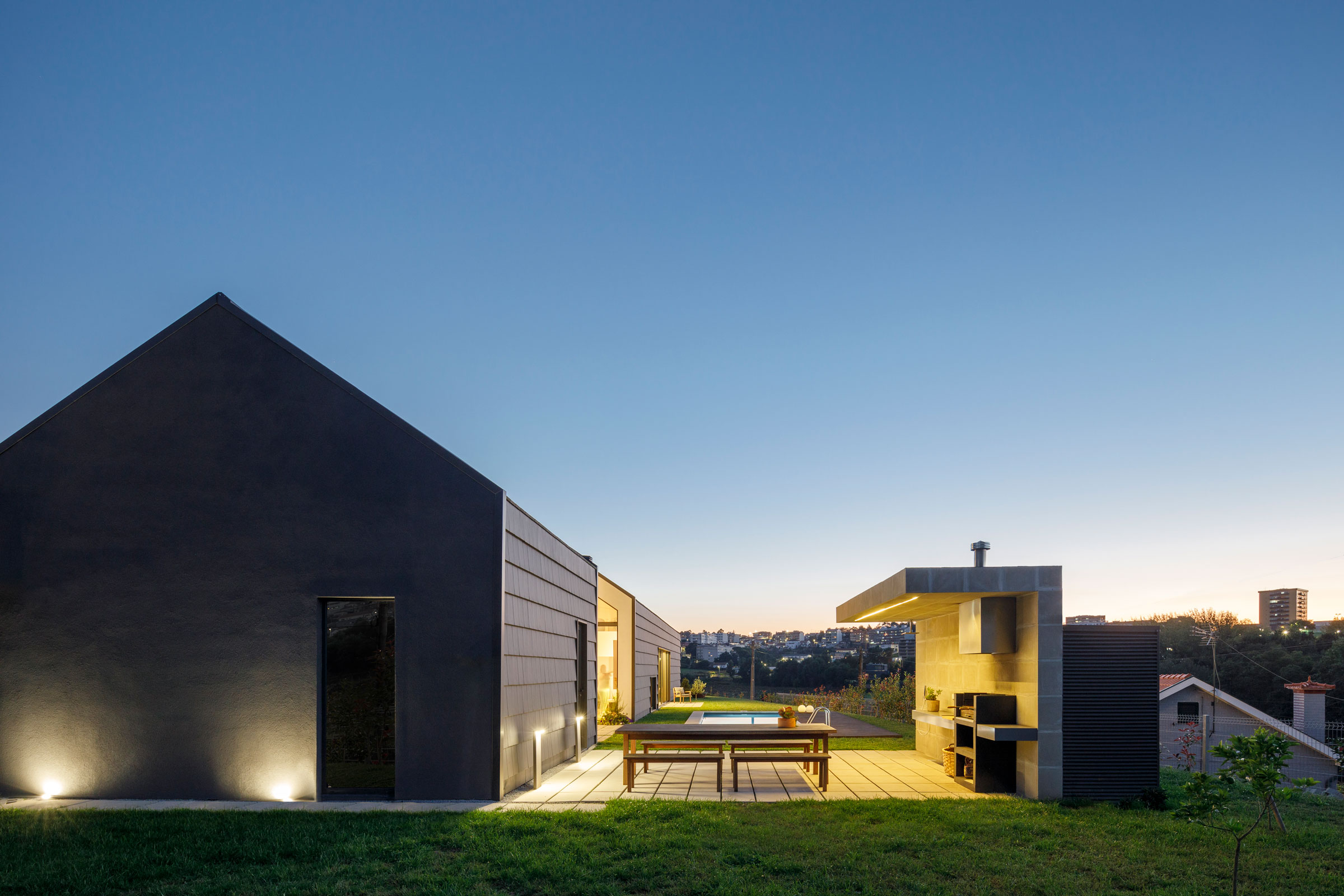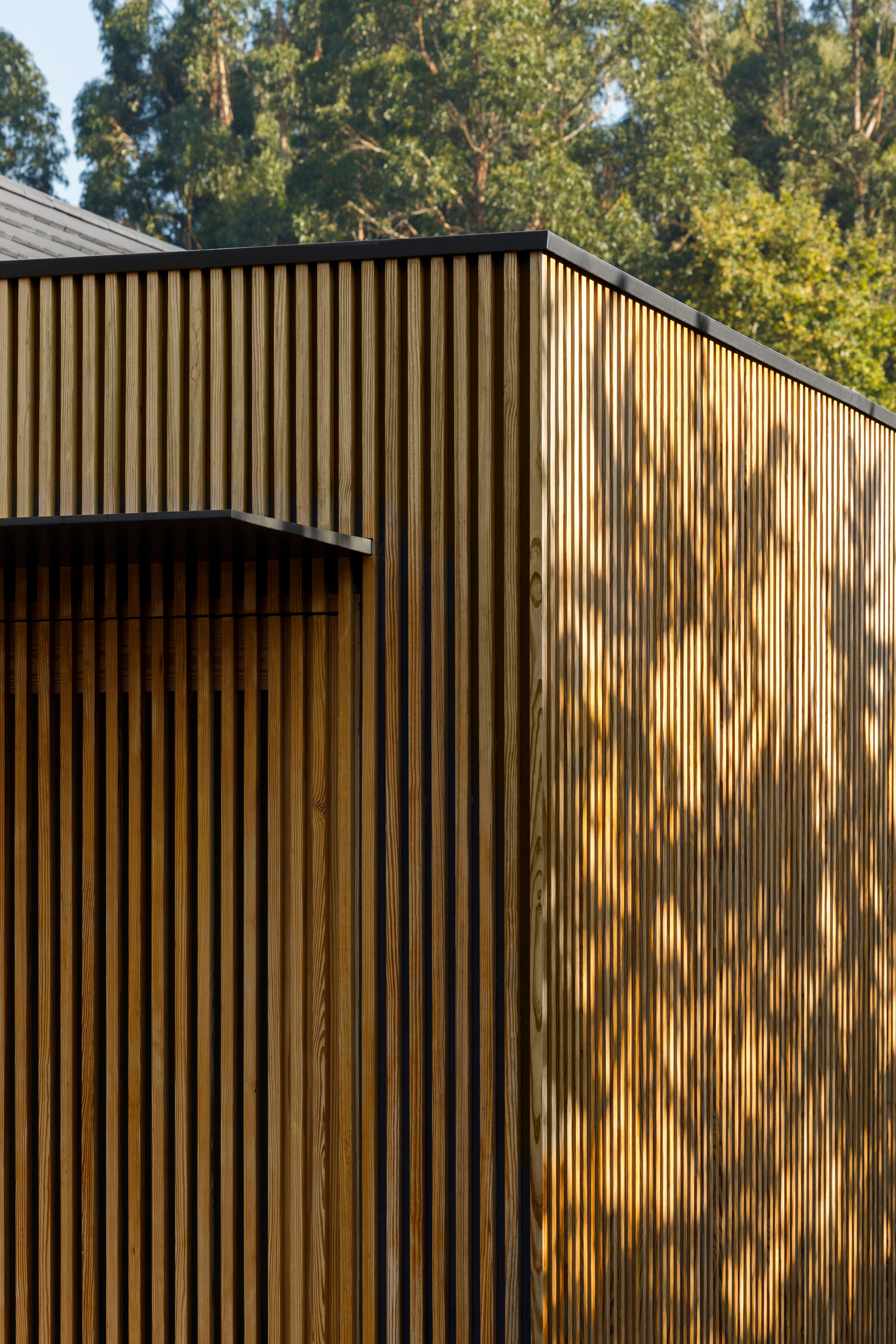Story at a glance:
- HOUS3 designed Santo Tirso House in Portugal using black tiles that created a ventilated facade.
- The house was designed to be sustainable and low maintenance throughout its useful life.
- The combination of wood and tile on the exterior make the house both compelling and comforting.
On a small hill in Santo Tirso, Portugal, a dark house sits in sharp contrast to the greenery around it. Its simple lines are the reinterpretation of the often imagined Portuguese house.
“They wanted a house without a flat roof, but that also had no traditional roof,” says Architect Fábio Costa, founder of HOUS3 architecture firm, who designed the house. “It was then that a mixture of forms and the reinterpretation of the house for this family emerged.”
Costa says it was no easy feat, but they took a leap of faith to reimagine the silhouette of the traditional Portuguese house.
“We thought of the house as if it were a whole, and I remember thinking, ‘What if it was all in tile?’” The bold look of the design immediately got everyone excited, design team and the homeowners, but then, Costa says, they had to pull it off. “It was a mixture of happiness and fear, because as we know on paper and scale models everything works, but in the relationship it might not work.”
Fortunately, it did.
Thermally Modified Wood Plus Tile
- Black plasma tile was applied to the roof and walls of the volume. Photo by Ivo Tavares Studio
- Lunawood Thermowood makes up the home’s facade. Photo by Ivo Tavares Studio
Costa and the team applied black plasma tile from CS – Coelho da Silva to the roof and walls of the volume they wanted to highlight and got, he says, fabulous results. He says the tile has a long lifespan and factory warranty and creates “a skin that allows a separation between the exterior and the interior of the house, that is, it creates a ventilated facade.”
The facade wood is Lunawood Thermowood, and Costa says says the thermally modified wood is a beautiful, sustainable material produced by using heat and steam. “Thermal modification improves the wood’s properties. Thermowood is dimensionally stable, resistant to decay, and a resin-free and non-toxic, natural product that is easy to machine and install.”
He says the thermally modified wood has a beautiful brown tone that naturally weathers over time to have a beautiful silver-gray patina.
Together, the thermally modified wood and black tile create an eccentric connection that’s comforting to look at. “The relationship is extreme between hardwood and industrial tile, but it works as a whole. Industrial black enhances the honey tone and natural gray oxidation of the wood,” Costa says.
More Surprising Design Details
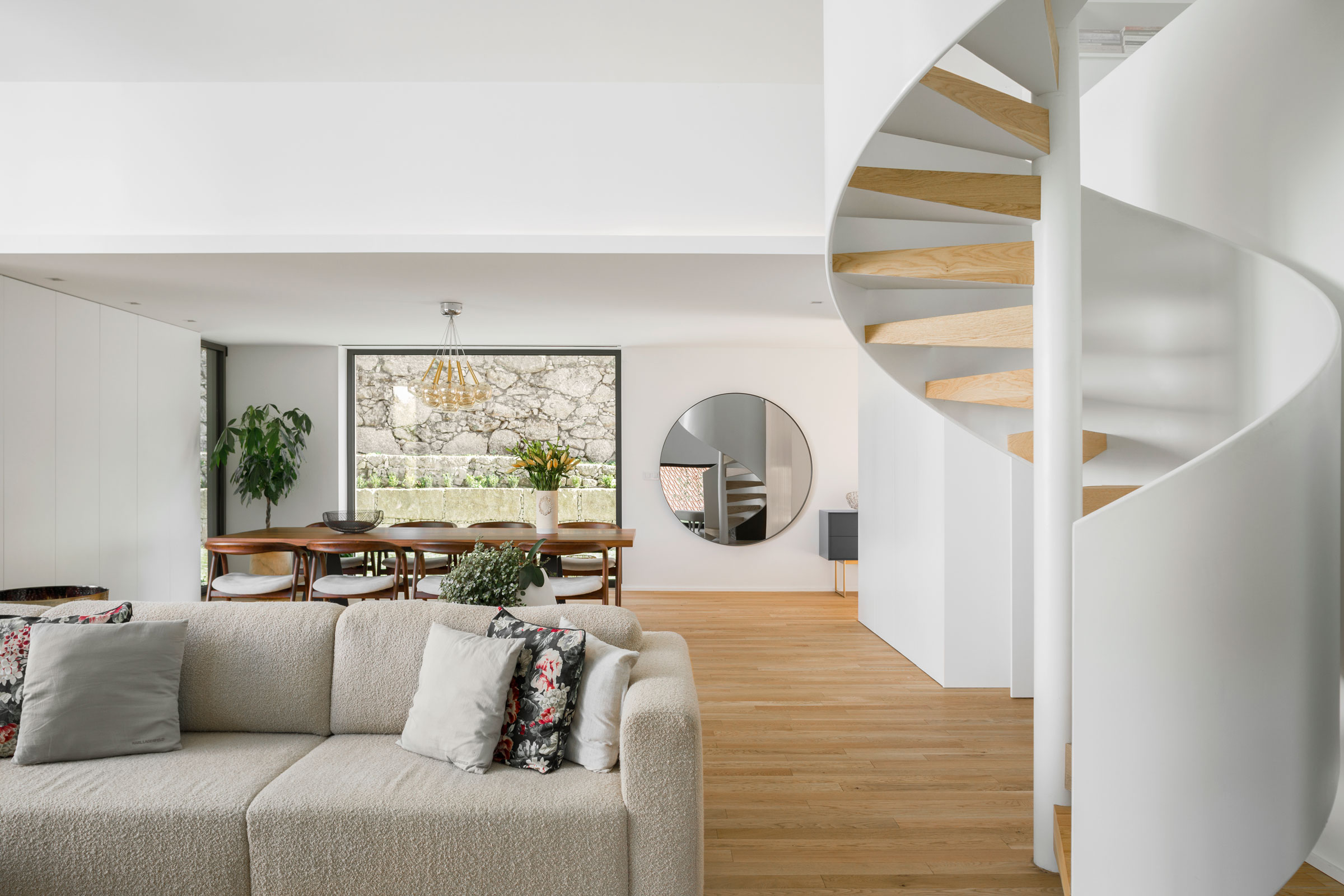
HOUS3 architects designed a simple white staircase almost as a sculptural space in Santa Tirso House in Portugal. Photo by Ivo Tavares Studio
The staircase was almost an afterthought—but a great one.
“It was something that came up practically at the end of the project because we thought, ‘What if we gave them a library, a lounge area?’” Costa says.
They started with the idea of stairs and thought, but how could they make it more than a staircase without taking away from the splendor of the interior?
“We wanted it to be a kind of sculpture.” The architects suggested a thin, white, simple staircase. Costa says it was captivating.
“Another interesting point is the color of the pool. It was something we wanted to be different,” Costa says.
They wanted the area around the pool to be dark and rich in color, evoking the feeling of the sea.
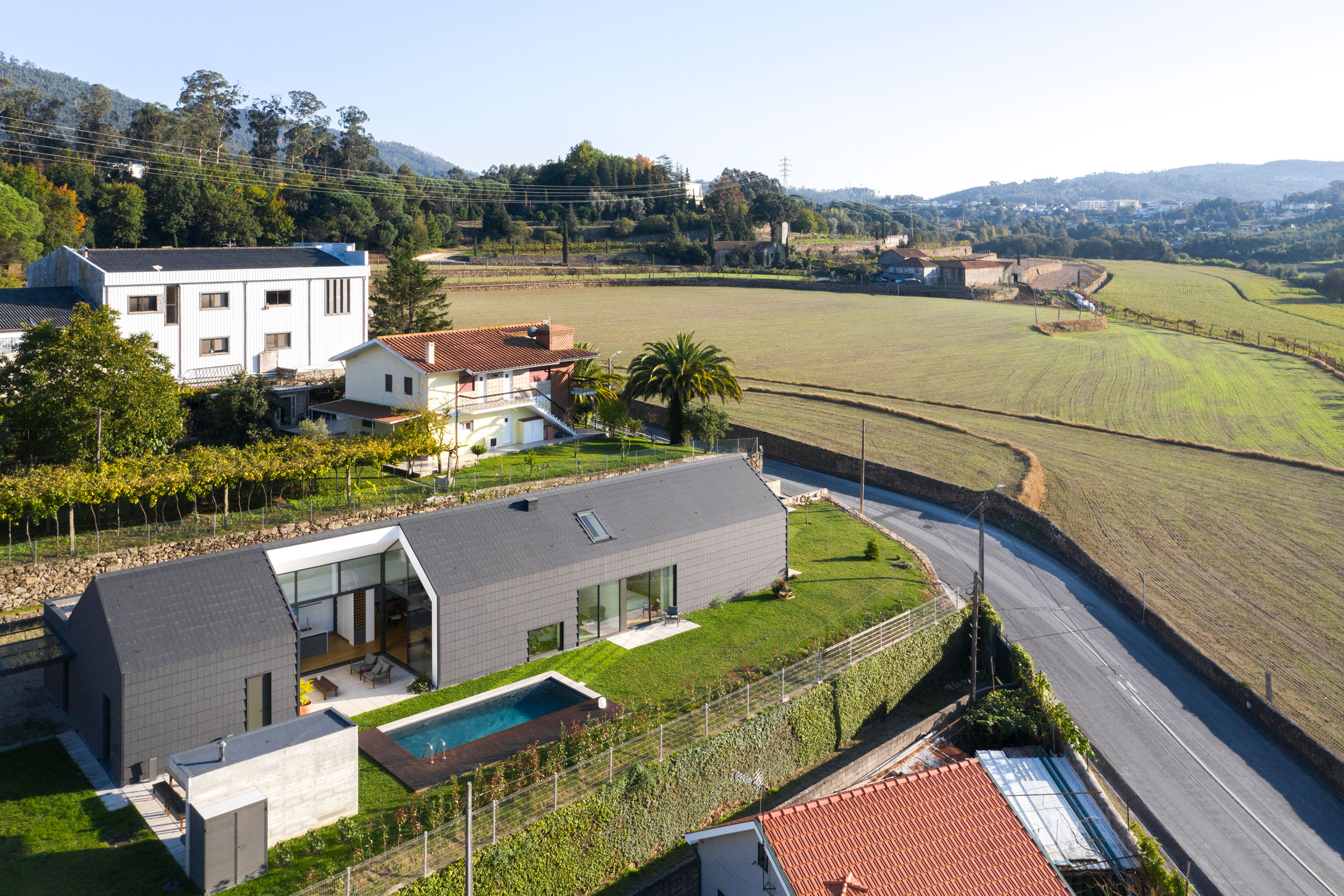
The Santo Tirso House in Portugal. Photo by Ivo Tavares Studio
The floors of the house are made of rustic oak and composed of a 3-millimeter blade of noble wood, and the remaining 9 millimeters in plywood.
“This has a brushed aspect with 10% brightness, giving the house a timeless charm,” Costa says.

“We wanted to be in the living room, in a familiar environment, and to have an experience of colors throughout the day through the immense patio and double height that exists here,” says Architect Fábio Costa, founder of HOUS3 architecture firm, who designed Santo Tirso House. Photo by Ivo Tavares Studio
The kitchen island is done in silestone, and the whole kitchen has SMEG appliances. Costa says the design team wanted the space to feel neutral but just as important as the rest of the space.
Costa says they wanted to design the house to be full of sustainable building materials that are low maintenance throughout its useful life.
“All materials were chosen in order to create a harmony, both in terms of construction and sustainability, as well as economically,” he says.
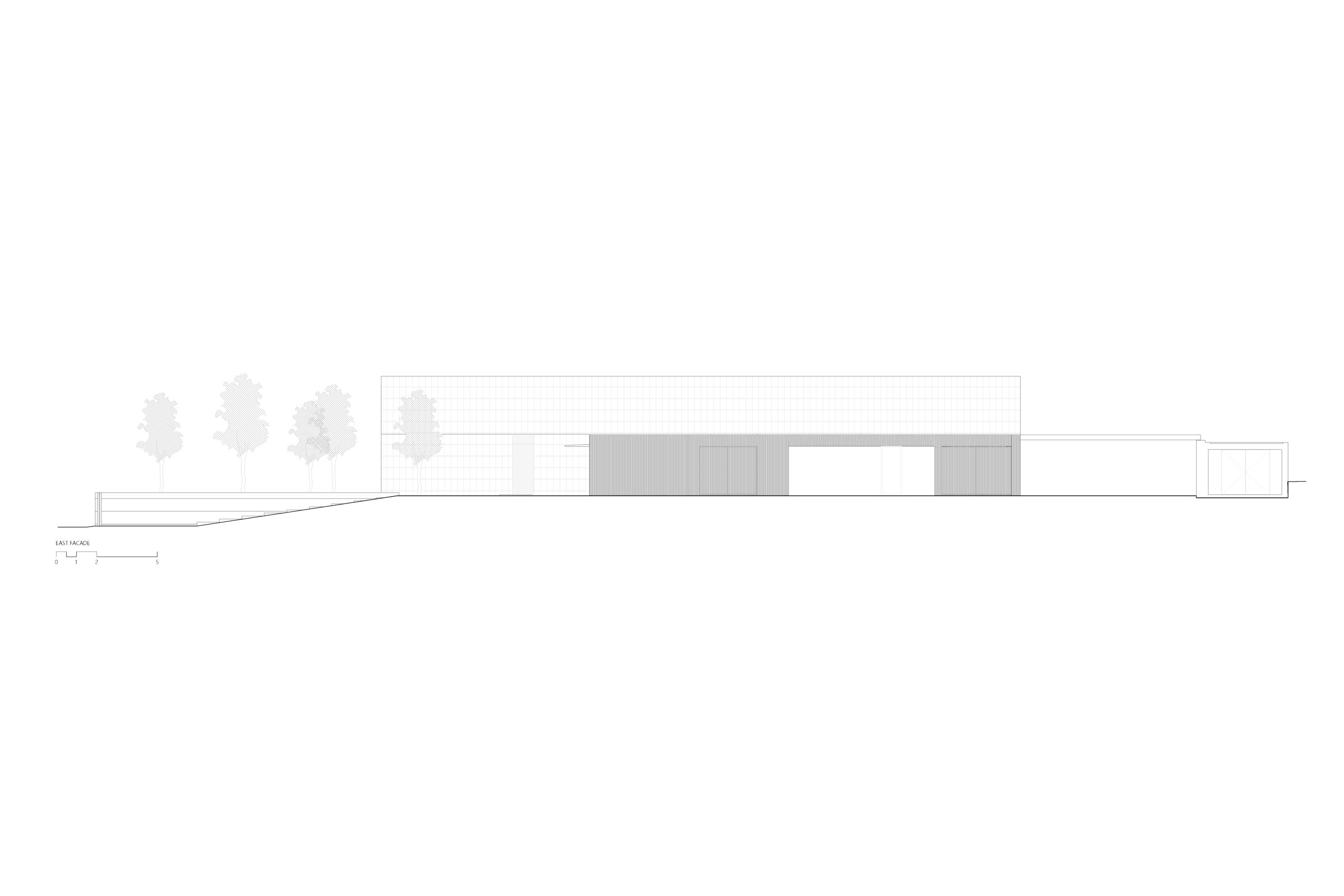
The east facade of Santo Tirso House in Portugal. Drawing courtesy of HOUS3
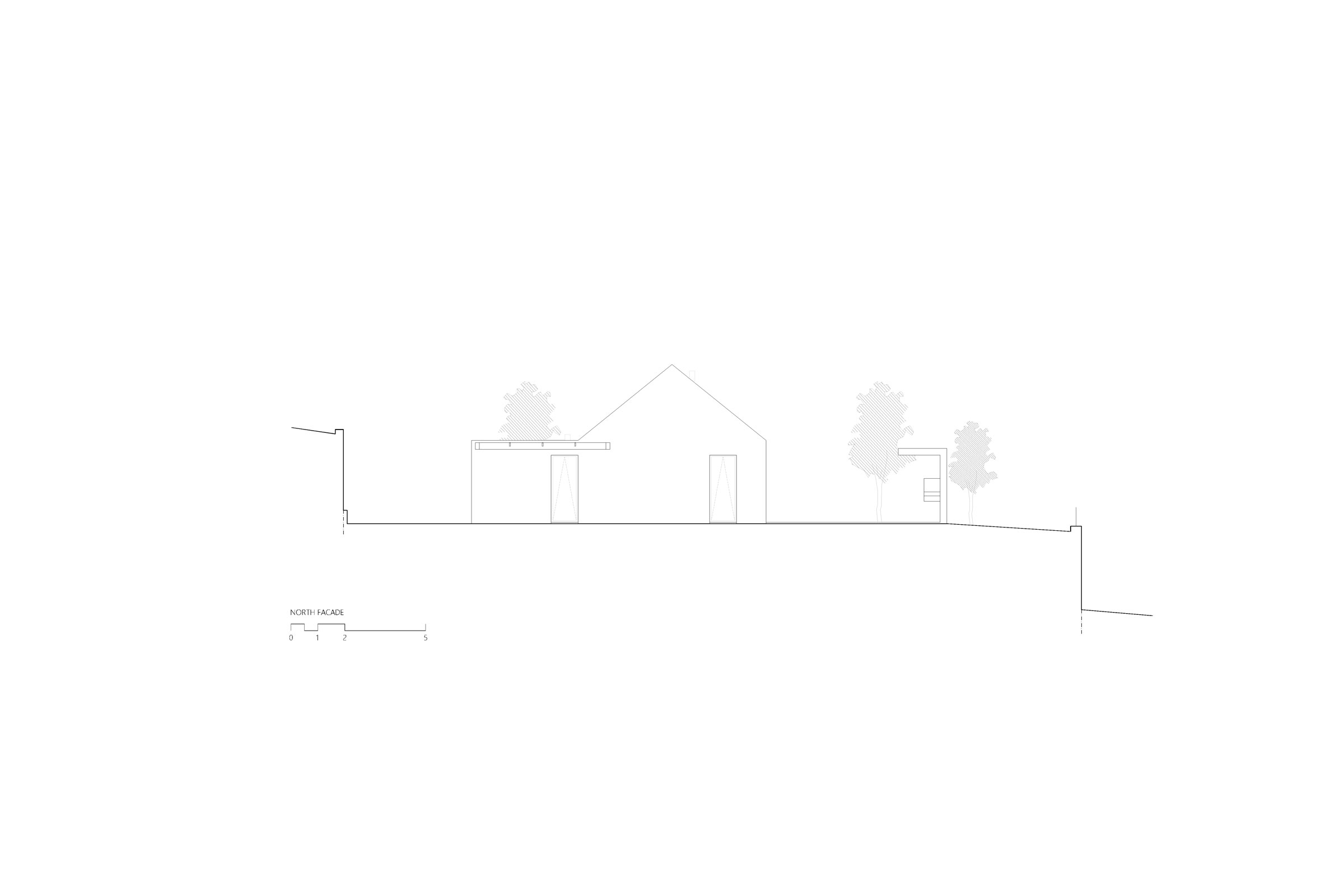
North facade of Santo Tirso House in Portugal. Drawing courtesy of HOUS3
Project Credits
Project name: Santo Tirso House
Location: Santo Tirso, Portugal
Completion: 2020
Size: 3,078 square feet
Architect: HOUS3
Tile: CS – Coelho da Silva
Facade Wood: Lunawood Thermowood
Windows: Cortizo, Minimalist Serie Cor Vision

